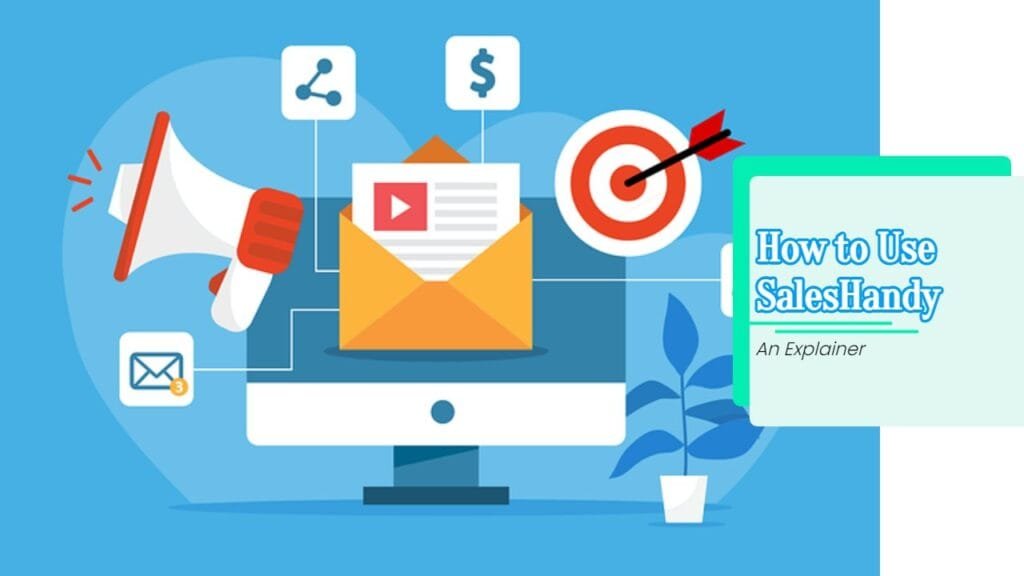Understanding Cybersecurity Marketing ROI
When it comes to cybersecurity, showing off your marketing chops and proving you’re getting your money’s worth is super important for companies looking to snag enterprise clients and build a solid reputation. You gotta have a killer marketing plan and know how to tell your success stories right.
Importance of Marketing Strategy
Having a good, sound marketing plan is like having a solid playbook for scoring big in the cybersecurity marketing game. Companies need to know who’s in the crowd they’re playing to, get what’s keeping them up at night, and whip up content that speaks straight to those cybersecurity headaches. According to Execweb, content marketing acts as a fantastic tool to school potential customers about their struggles, bringing in leads, and giving your SEO some serious juice.
Utilizing Case Studies
Bringing in case studies is like getting an ace up your sleeve—it boosts your street cred big time and gets folks genuinely interested in what you’ve got on offer. Sharing real-life tales of cyber mishaps and the damages they brought can spark a fire under potential customers to wake up and smell the need for your cybersecurity know-how. This way, you’re not just showing off how awesome your services are but also pointing out the scary what-ifs lurking if they don’t get on board (Execweb).
| Case Study Elements | Key Features |
|---|---|
| Client Situation | Snappy view of the troubles caused by cyber threats |
| Action Taken | Breakdown of the cybersecurity fixes rolled out |
| Results | Solid wins like fewer issues, better compliance, or bigger savings |
Grasping what different industries are up against helps you up your marketing game. Tweaking case studies to mirror the special hurdles industries like healthcare or finance deal with makes your pitch hit closer to home and really grabs the interest of potential customers (Hop Online Blog). With these savvy tactics, cyber-savvy firms can market themselves as the go-to crew for enterprise clients while clearly proving they’re worth every penny spent.
Effective Cybersecurity Marketing Tactics
Buckle up for a ride through the world of cybersecurity marketing, where making smart moves is the ticket to skyrocketing your cybersecurity marketing ROI. Let’s dig into two key strategies: email marketing and paid campaigns.
Email Marketing Strategies
Think of email marketing as the unsung hero of cybersecurity marketing. Making it personal and packing it with solid content is where the magic happens. When folks feel like the email was written just for them, they tend to pay more attention, which is precisely what cybersecurity firms crave.
| Email Marketing Strategy | Key Components |
|---|---|
| Personalization | Tailor your message by playing detective with recipient info (like their company size, industry, and past chit-chats) |
| Quality Content | Hit them with the good stuff: informative articles, juicy case studies, and insider insights |
| Call-to-Action | Get them to take the bait with slick, clear invitations to engage |
No one likes spammy emails with zero value. That’s why cybersecurity marketers should aim for emails that offer genuine nuggets rather than endless promotions (Execweb). This kind of credibility makes your brand look like the real deal.
Leveraging Paid Campaigns
Paid advertising’s all about making shockwaves in the crowded cybersecurity market. With these campaigns, you’re boosting your content’s reach and supercharging lead nurturing. Cybersecurity firms know the score—these paid campaigns get hefty chunks of the budget because they work.
| Paid Campaign Type | Purpose |
|---|---|
| Search Engine Ads | Snagging hot traffic right from targeted searches |
| Social Media Ads | Cranking up brand visibility and pulling in leads on platforms like LinkedIn and Facebook |
| Display Ads | Cementing your brand’s image on industry-focused sites |
As CEOs get more jittery about data security, wallets open wider, driving yearly spikes in cybersecurity spending. It’s crucial for companies to have a diverse toolkit of cybersecurity tactics to squeeze every last ounce of juice from their marketing ROI.
Cybersecurity outfits often divvy up their spending between lead generation (40%) and brand awareness (60%), shining a light on how much they care about visibility (Hop Online). More companies are throwing video content into the mix, a sure way to catch the eye of enterprise clients and build that all-important credibility. If you want to ace your security marketing strategies, these tactics are your best bet for hitting the target.
Maximizing ROI in Cybersecurity Marketing
In the bustling world of cybersecurity, making every marketing dollar count is crucial for companies zeroing in on enterprise clients. It’s all about honing in on what truly matters and getting stuck into industry gatherings.
Key Metrics for Success
Keeping tabs on performance indicators (KPIs) helps cybersecurity folks figure out what’s working in their marketing playbook. Here’s a nifty table breaking down some of the biggies:
| Metric | Meaning |
|---|---|
| Click-Through Rate (CTR) | Shows how often people are hitting your links—it’s a handy way to measure the pull of online ads and emails. |
| Conversion Rate | Tells you the percentage of visitors doing what you want them to do, like signing up or buying, which is key for sizing up landing pages and calls to action. |
| Cost Per Lead (CPL) | Works out how much you’re shelling out to bag a lead. |
| Return on Investment (ROI) | Checks the profit margins on your marketing gigs by sizing up the revenue against what you’re spending. |
Plowing cash into top-notch lead gen and ad campaigns is a must. With these metrics, firms can tweak their approaches to reel in more potential customers.
Juggling various platforms such as social media, content marketing, and PPC ads boosts your reach and jazzes up engagement with those you want to charm. Watching these numbers helps in making well-informed decisions, paving the way for better cybersecurity marketing strategies.
Industry Event Participation
Jumping into industry get-togethers is a smart move for cybersecurity companies looking to strut their stuff and connect with prospective customers. These gigs offer a stage to flash expertise, build an inner circle, and really understand what clients are crying out for.
Matthew Fisch, a pro consultant in cybersecurity, stresses diving into these events to bring value as an advisor, guiding potential clients in crafting solutions (Magnetude Consulting). This tactic does wonders for boosting a brand’s visibility and upping its game in the eyes of the industry big wigs.
To make the most out of these events, companies should ponder:
- Sponsorship Chances: Standing out as a sponsor can skyrocket brand recognition among the top dogs.
- Networking: Rubbing elbows with industry pros can open doors for partnerships and teamwork.
- Showcasing Stuff: Demoing products or services can stir up intrigue and spotlight what sets you apart.
Getting involved in these events can give a hefty boost to marketers aiming to polish up the cybersecurity brand image and build trust with big players. For more juice on how to ace event marketing, check out our cybersecurity event marketing section.
Tailoring Marketing Approaches
Grasping the ins and outs of the cybersecurity industry is crucial for businesses wanting to nab enterprise clients and boost their street cred. Pulling together marketing plans that fit like a glove for each industry and cranking up those conversion rates is the secret sauce to sky-high cybersecurity marketing ROI.
Industry-specific Marketing
Industry-specific marketing is all about tweaking marketing efforts to tackle the distinct demands and hurdles that businesses face in various sectors. Take healthcare companies, for instance—they’ve got to juggle HIPAA rules, while financial services are all about locking down data. By tailoring marketing efforts to these niches, cybersecurity firms can better hit the mark with potential customers, making those messages stick (Hop Online Blog).
This game plan boosts interaction and builds trust with target audiences. A sharp insight into unique industry issues helps firms shine as savvy partners, giving them an edge in the eyes of potential clients.
| Industry | Key Marketing Focus |
|---|---|
| Healthcare | Compliance with HIPAA regulations |
| Financial | Emphasis on data security and privacy |
| Real Estate | Risk management and fraud prevention |
| Construction | Project management and data protection |
Looking to dive more into these tactics? Check out our piece on cybersecurity content marketing for industry-centered content plans.
Conversion Rate Optimization
Conversion Rate Optimization (CRO) boils down to making marketing efforts shine, increasing the number of visitors who take the plunge, whether it’s filling out forms or hitting that buy button. For cybersecurity marketing, this means sprucing up landing pages, boosting user experiences, and trying out A/B testing to pinpoint what truly clicks with people.
Key bits of a winning CRO strategy might include:
- User-focused design: Ensuring the website is a breeze to navigate.
- Grabbing calls-to-action (CTAs): Crafting clear CTAs that nudge potential clients toward action.
- Top-notch content: Cooking up content that hits home with what the audience cares about.
Recent gossip says that cybersecurity firms put a hefty chunk of change towards lead generation (40%) while making brand awareness a big deal (60%). Striking this balance shows just how vital both visibility and conversion efforts are (Hop Online).
For more juicy tips on ramping up conversion rates, pop over to our article about cybersecurity marketing strategies and how to whip up a slick, industry-tailored game plan. When marketing approaches fit like a glove, not only are specific challenges tackled, but ROI for cybersecurity firms sees a serious lift.
Advanced Technologies in Cybersecurity Marketing
In today’s fast-paced world of cybersecurity marketing, using cutting-edge tools like AI and machine learning isn’t just helpful—it’s crucial. These smart technologies give companies the ability to spruce up their efficiency, keep up with ever-changing market conditions, and offer top-notch security solutions.
Role of AI and Machine Learning
Bringing AI and machine learning into the marketing mix can seriously boost how well your strategy works. These digital brains make it easier to fine-tune security solutions on the fly, catch threats more accurately, and simplify security jobs. Take AI-driven analytics, for example—they help marketers spot potential customers and chat with them in a way that feels custom-made, which can really kick conversion rates into high gear. This all feeds into a much healthier cybersecurity marketing ROI.
Check out this table to see how AI and machine learning make cybersecurity marketing even better:
| Benefit | Description |
|---|---|
| Automated Marketing | Let AI handle the boring stuff like repetitive tasks, so teams can focus on big-picture marketing moves. |
| Predictive Analytics | Machine learning digs through data to snap up insights about what customers might need down the road. |
| Personalized Messaging | With AI’s help, marketing messages hit home better, boosting response rates and generating more leads. |
| Enhanced Threat Detection | Machine learning makes sniffing out cyber threats more precise, strengthening client confidence. |
Cost-Efficiency Focus
Keeping an eye on costs is key for any company wanting to crank up their cybersecurity marketing ROI. Tasks like automated incident management can save a chunk of change by cutting down response times, letting teams pour resources into strategy instead of just reacting to threats (CyVent).
The financial headache from false positives in security can burn a hole in the wallet, costing enterprises more than $1.3 million every year in lost dough if not kept in check (CyVent). So, putting money into technology that cuts down these false alarms can make financial and operational sense.
As cyber crime’s cost keeps rising—expected to hit a whopping $10 trillion by 2025 from $4 trillion in 2021 (CyVent)—companies must bank on strong security solutions and savvy marketing to clearly show their value, including ROI through data-driven storytelling (Help Net Security).
By embracing advanced tech and cost-effectiveness, cybersecurity companies can set themselves up as trailblazers in their field while maximizing marketing and operational success. Digging into fresh cybersecurity marketing strategies and keeping up with cybersecurity marketing trends can turbocharge these efforts even more.
Financial Impacts of Cyber Attacks
Grasping the financial punch from cyber attacks is crucial for cybersecurity outfits and marketing folks. With hackers getting craftier by the day, businesses worldwide are learning firsthand just how painful these attacks can be to their wallets.
Growing Cybercrime Damages
Holding on to your hat? Cybercrime damages are on the up and up. Experts say we’re looking at a tab of around $10 trillion by 2025, skyrocketing from $4 trillion in 2021. This jump highlights why nailing down strong cybersecurity setups and marketing plans is more important than ever!
| Year | Projected Cybercrime Damages |
|---|---|
| 2021 | $4 trillion |
| 2025 | $10 trillion |
Direct Costs of Data Breaches
Data breaches leave a hefty mark on finances. IBM’s 2023 report pegged the average hit at $4.45 million, a noticeable 15% bump from 2020. It’s not slowing down, either—costs might hit $4.88 million by 2024 with a 10% spike from last year.
Different businesses feel the sting differently. Finance and Real Estate take a hard slap, losing on average $34.3 million annually, while Construction feels a lighter pinch at $7.3 million each year.
| Sector | Average Annual Loss (AAL) |
|---|---|
| Finance and Real Estate | $34.3 million |
| Construction | $7.3 million |
Given these numbers, cybersecurity firms must nail strategies for showing why minimizing risks matter and how they build trust. Almost half of the people surveyed said they stopped buying from companies that fumbled their trust because of cyber blunders.
Getting a handle on the money-draining effects of cyber threats can lead to making better decisions with cybersecurity marketing strategies, drawing more big-name clients, and establishing a solid standing in this ever-shakier digital arena.
Calculating Cybersecurity ROI
Figuring out the bang-for-your-buck with cybersecurity isn’t just smart—it’s necessary. Companies need to ensure that the money spent on keeping data safe isn’t just disappearing into the ether. Being able to show real results can open eyes and wallets, making the case for a good security budget super clear.
Aligning Budgets with Goals
For Chief Information Security Officers (CISOs), it’s all about making sure spending lines up with the company’s big-picture goals. When those goals are met, the company gets more than just protected data—they see better customer trust, a stronger brand, and smooth sailing if problems arise (Thanks, CyVent).
Tying dollar amounts straight to outcomes makes it clear that these aren’t just expenses—they’re investments in the company’s future. Laying out what’s spent and what it achieves can help.
| Business Goal | Budget Allocations | What They Achieve |
|---|---|---|
| Earn Customer Trust | $150,000 | More returning customers |
| Quick Responses to Issues | $100,000 | Faster threat responses |
| Boost Brand Status | $200,000 | Better trust scores |
Before buying new tech tools, companies gotta know their goals and the benefits they hope to achieve. This way, they can pick the right tools for boosting security and the business (Illumio).
Metrics-based Communication
Communicating the value of cybersecurity to the C-suite and investors? It all comes down to numbers. Setting clear, achievable Key Performance Indicators (KPIs) lets everyone see the impact. With defined timelines, these KPIs make it easy to evaluate if the security strategies are scoring a win (Help Net Security).
Here’s an example KPI table:
| Key Performance Indicator | Starting Point | Goal | Within Timeframe |
|---|---|---|---|
| Speed in Handling Issues | 15 minutes | 5 minutes | 6 months |
| Audit Pass Rates | 70% compliance | 90% compliance | 6 months |
| Trust Ratings from Customers | 7.5/10 | 9/10 | 6 months |
Seeing these metrics over time helps everyone understand how vital good cybersecurity is for success. So for those looking to connect security measures with others, maybe check out some cybersecurity marketing strategies.
Successful Sales Strategies
In the cutthroat arena of cybersecurity, firms need slick sales strategies that help build tight-knit relations with potential buyers while also adjusting approaches to fit various needs.
Building Buyer Relationships
Creating and maintaining bonds with buyers sits at the core of cybersecurity marketing. It’s all about getting to know the folks you’re selling to and their peculiar problems. Trust and credibility are the name of the game. Matthew Fisch, a pro in cybersecurity and SVP of sales, lays down that it’s vital to rub elbows with the right crowd at industry meets and offer sound advice to hammer out business solutions (Magnetude Consulting).
Trust doesn’t come cheap. Nearly half of the participants in a survey ditched a company post-security blunder (Spiceworks). To win trust, cyber companies should be straight-up in dealing with their offerings.
| Key Elements of Buyer Relationships | Strategies |
|---|---|
| Trust Building | Chat with prospects and flex some expertise |
| Consistency | Keep the conversation going and share useful nuggets |
| Transparency | Spill the beans about security plans and mishap management |
Persona-focused Marketing Programs
Whipping up marketing plans that hit different security personas is a must to catch varied buyer segments. Cybersecurity marketers really need the inside scoop on different purchasing personalities. Programs centered on these personas bump up sales support efforts, making it easy to sync with the various needs of possible clients.
Tuning marketing gab to strike a chord with specific personas lets cybersecurity firms tackle distinct troubles, making them stand out. This involves setting clear goals and expected results, ensuring that the dollars laid down achieve genuine business benefits while shoring up security (Illumio).
| Persona-Focused Marketing Elements | Benefits |
|---|---|
| Identification of Personas | Tailors marketing blitz to particular buyer whims |
| Customized Messaging | Hits the spot and charms the right folks |
| Alignment with Objectives | Backs investments boosting security and biz results |
Focusing on bonding with buyers and rolling out persona-driven marketing programs, cybersecurity firms can polish their image and draw enterprise clients in more convincingly. Using cybersecurity marketing strategies and keeping up with cybersecurity marketing trends streamlines these steps.



















